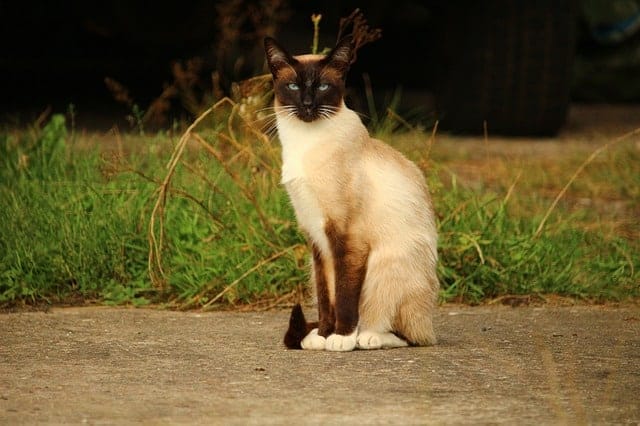Intussusception in cats a dangerous condition of the intestinal tract of the feline. Let’s see what the causes, symptoms and treatment are.

Intussusception in cats is a condition that can occur in animals of all ages .
However, it generally affects younger cats with weaker immune systems (between the ages of one week and nine years).
It can occur in all breeds but the Siamese are more prone.
It is an obstruction that can be partial or complete, but the occurrence of intussusception as a consequence leads to a mechanical closure of the gastrointestinal tract.
Causes of Intussusception in the Cat
The most common causes of intussusception in cats can be: intestinal parasites, enteritis, recent abdominal surgery, intestinal mural disease.
But all this can also be due to the introduction of a foreign body into the tract and intense contractions of the intestinal portion of the intestine.
Unfortunately, however, we can say that any disease that can alter gastrointestinal motility can lead to intussusception.
Symptoms

The signs that can occur when intussusception occurs in cats are distinguished by intussusception in the upper and lower intestinal tracts.
Symptoms for high intussusception in the intestinal tract can be:
- difficulty in breathing
- abdominal distension
- abdominal pain
- regurgitation
- vomiting in cats
- bloody vomit
The symptoms for low intussusception in the intestinal tract, can be:
- bloody diarrhea
- occasional vomiting
- loss of appetite
- weight loss in cats
- straining to defecate
Nature, severity and duration of clinical signs are related to the site of intussusception along the intestinal tract.
Diagnosis and treatment of intussusception in cats
In order to make a diagnosis, the veterinarian will need to perform certain tests.
Of course, not before having ascertained the history, the onset of the first signs of discomfort and the possible accidents that could have caused this condition in the feline.
He will then proceed with the clinical examination, sometimes allowing to perceive a mass located in the cranial abdominal sector on palpation.
He will then move on to a differential diagnosis, as there are several possible causes for this condition.
The vet will continue to carry out tests until the problem is identified. To do this he will proceed with several exams:
- radiographs
- ultrasound scans
- stool sample collection (to check for intestinal parasites and electrolyte balances will be checked).
Once the diagnosis has been established, the veterinarian will proceed with the appropriate treatment, not before having hydrated the cat, through an immediate and aggressive intravenous fluid .
Once you have stabilized your cat, she will be able to deal with any signs of electrolyte imbalance and decide to administer antibiotics.
Where the obstruction depends on a foreign body, the solution is to intervene surgically and manually eliminate the problem, and then subsequently administer drugs to the cat to promote healing and prevent infection.
Unfortunately, even after treatment, a relapse is possible, within the first weeks after the animal’s surgery.
This is why careful observation of the animal, an adequate diet (small and easily digestible meals for the first few days) and the administration of fluids are necessary to avoid dehydration in the cat.






